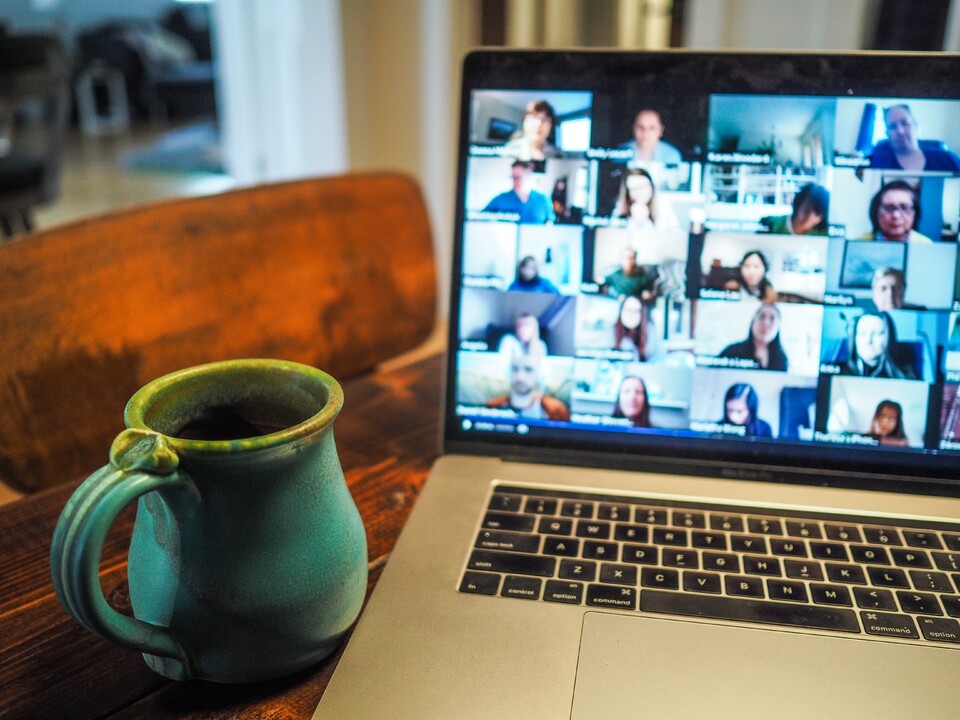As our society is quickly and sometimes forcefully transitioning into a remote work environment, our ability to effectively convey our ideas is being shaken up.
Indeed, virtual meetings and presentations are quickly becoming a standard, leaving many of us with a major challenge: how do we keep our audience interested, connected and engaged?
Most of the elements discussed in my previous article “The Powerful Storyteller – 10 tips to help you enjoy being a presenter” remain valid and foundational, i.e. Knowing your audience and environment, preparing and practicing, and also having fun.
Nevertheless, in a world where our average attention span can be counted in seconds (While our ability to multitask has increased), how does one keep an audience engaged in virtual meetings?
Having been working in a hybrid world for many years, I did find it difficult at times to assess the audience’s interest in the message shared, often due to the lack of real-time observable feedback. I have however realized that by managing some of the following elements, I could better connect and engage with my audience while making it an enjoyable experience for all:
1. Adapt your environment
In order to better connect with your audience, you need to create the most physical-like environment. Indeed, this can go through elements such as:
- Having the right background – A simple one that reflects your line of work and message is all you need. Anything that comes to overload the picture, could take the attention away from you and harm your presentation.
- Getting the lighting right – Your body and face need to be properly enlightened, not under or over-exposed.
- Positioning the camera at eye level if possible – Nobody wants to be looking at your nose or the top of your head.
- Presenting in a quiet environment – Any background noise or movement will take the attention away from you.
- Leveraging the right audio and video quality – Having an external microphone as an example would help in reducing interferences and provide a more realistic experience. Same goes for high-quality video as an audio-only session would not have the same impact.
- Ensuring that your Internet connectivity is of high quality and reliable.
2. Get comfortable with the technology
Your presentation is not the moment to test your audio or video. The right preparation level will allow you to run the necessary checks prior to starting the session. I would recommend having another person joining in before to support you through this.
3. Be presentable
As with the background, having the right appearance would tremendously impact your presence. As a tip, I would recommend to avoid overloading the image with unnecessary jewelry, pattern-charged oufits or anything that could obstruct your face too much.
The key word here is “simplicity”.
4. Establish eye contact
Like presenting on stage, establishing eye contact happens to be a highly effective tool to connect with your audience. But you will ask: How does one do that remotely?
The reason we want to have the camera at eye level is so that when formulating a message, you may look straight at the camera which would appear to the audience as if you were addressing them directly.
5. Leverage your voice
Whether in a physical or virtual meeting, your voice is a major vehicle to convey your message. Controlling its speed and ton would help you achieve a stronger impact.
Additionally, I find that smiling while talking give the audience a warmer and more enjoyable experience.
6. Engage with your audience
One of the hardest part of running virtual presentations is to feel real-time feedback as it may often feel like a monologue.
Not every presentation will give you the opportunity to exchange with your audience.
Nevertheless, I find that the following elements are helping:
- Leveraging sentences that engage their imagination or emotions such as “Remember a moment where you felt like…” or “Think of the last time you were…”.
- Allowing your audience to either ask questions through the chat/Q&A section or the “Raise your hand” feature some conference systems might have. Those questions might then be addressed during or at the end of the session.
7. Get support
Often, having a colleague or friend assisting you in your presentations, will help you be more effective and focus on your audience.
This person could help you test your setup, take questions via the chat/Q&A section, and provide valuable feedback.
8. Pay attention to your image
When presenting virtually, some could forget they are being watched.
It might seem obvious, but I will still mention it: remember that you have an audience and you are being observed. As such, many things you might do while on your own shall be avoided, including eating while on video.
9. Learn and adapt
In the previous article, we have discussed the importance of practice and feedbacks in order to improve.
Virtual sessions can even make it easier as most systems allow for sessions to be recorded. My advice would be to leverage it in every session, with the authorization of the audience, and replay the recordings in order to take learnings out of them.
Additionally, if you have gotten support from a friend or colleague in the preparation phase, it is an opportunity to request feedback too.
10. Have fun
I will insist once more on the importance of enjoying your exchange with the audience as this part plays a crucial role in the circle of continuous improvement.
For storytellers, it is about building and delivering entertaining stories. For others, it might be about sharing knowledge, or even engaging in panel discussions.
Find the elements that drive you happy and get more of this into your session.
Many of us have found it confusing and sometimes uncomfortable to effectively run a virtual meeting or presentation, which itself was impacting our ability to enjoy the exchange.
After sharing my previous article, many have asked information on how to better engage with an audience in a virtual setup. Those elements helped me in delivering more effective remote presentations and I do hope you will benefit from them.
I would be highly interested in getting your perspective on those tips and get answers to the following questions in order to share further insights in my next article:
- What is the one you found the most useful?
- What is the one you believe is the most difficult to apply?
- What is the one you would like me to dig deeper into?
Remember: get out there, practice and enjoy the process!



